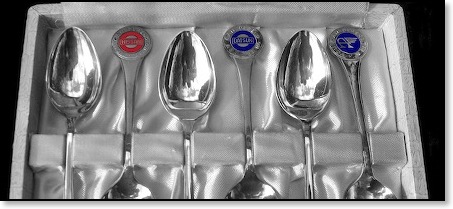Nissan Builds Austin Cars under Licence
After World War II American forces occupying Japan under the direction of General MacArthur, took control of Japanese government and factories for several years, and would not allow their car companies to produce passenger cars, only trucks. They also dismissed all the various people in higher management and appointed other Japanese to control factories and Government departments.
The Nissan factory in Yokohama was bombed in WWII, but in 1946 was rebuilt by occupation forces, and was obliged to halt production of the Datsun cars. At first the factory restarted by making trucks, which were based on a design it had purchased from the Graham-Paige Company of Detroit sold under the Nissan label. The production of passenger cars in Japan was forbidden by the occupation authorities, but these were relaxed in June 1947, and total removed in October 1949. So they introduced a passenger car called the Thrith which was based on a prewar design and sold under the Datsun label.
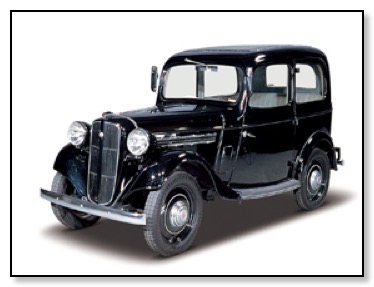
This car had a 722cc side valve engine
In 1947 Taichi Minoura became president of Nissan. As Minoura's appointment did not find favour with the Unions, Due to the unions hold over the workforce the growth of the company was soon restricted. To help Minoura with the financial side of the company, the Industrial Bank of Japan was asked to appoint someone to the Board. The bank sent a 42 year old banker named Katsuji Kawamata, an ambitious man who knew nothing about cars. Kawamata quickly learned that to move the company forward he had to confront the Unions.
The restriction imposed by the occupying forces was lifted in 1948. Nissan were then able to develop new models, A difficult task because a large amount of capital was needed to re-equip the factories with the latest equipment. They also needed to develop cars that had the latest trends in styling.
In 1951 the ousted president, Genshichi Asahara later returned to Nissan, a company man purged by the Americans. With the support of Kawamata and the Unions, Asahara became president of Nissan, replacing Minoura.
Asahara decided that as the company lacked funding, so the way forward was to build cars under licence. Having looked around the world for a suitable partner, he approached the Austin Motor Company.
So why was the Austin Motor Company chosen, well it appears there were many reasons. First it was an English car that had proved to be reliable and also suited the Japanese road conditions. In-fact by March 1952 a total of 1,288 Austin’s had already been imported in to Japan. They had enjoyed customer satisfaction, with the engine receiving very favourable comments.
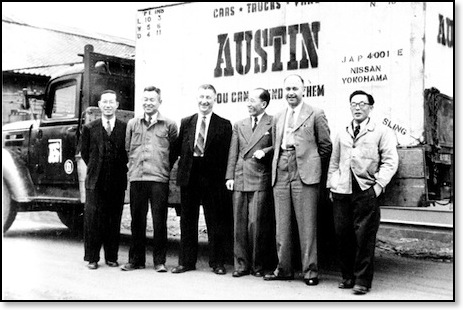
The First CKD Kits Arrive 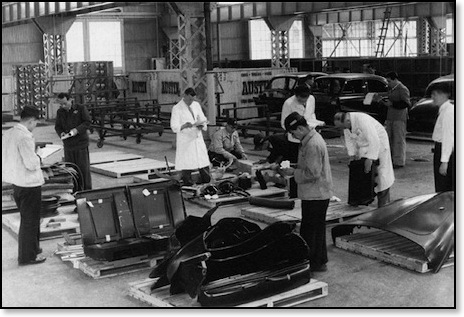
Then followed a series of meetings with a final agreement for the assembly and manufacture of Austin motor vehicles in Japan signed on 4 December 1952. The agreement forbade the sale of Austins produced by Nissan outside Japan without the written permission of The Austin Motor Export Corporation, and was for a term of seven years.
Nissan was to seek from the Ministry of International Trade and Industry permission to import and pay the necessary sterling for at least 2,000 cars per year, or the maximum permitted by the Ministry of International Trade and Industry.
The A40 Somerset would be built in Japan using kits of components sent from Longbridge as Completely Knocked Down (CKD). In the first year of production no royalties were paid. In the second year royalties were set at 2% of the car's retail price, with a minimum payment of £10,000. In the third year this was increased to 31/2% with a minimum payment of £20,000. Then in year four and subsequent years 5% with a minimum payment of £30,000. The agreement allowed Nissan to produce their own parts for the car, but also to use them in their own design of vehicles.
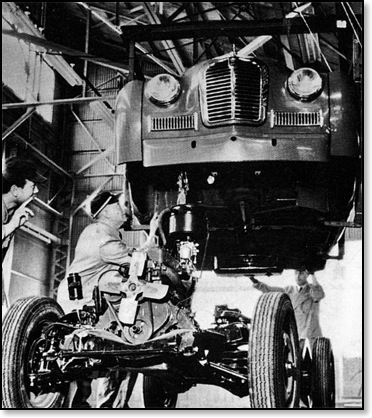
Body Drop
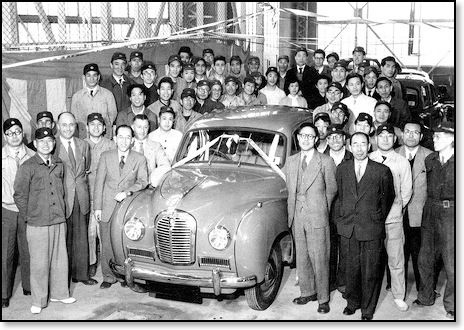
The First A40 off the line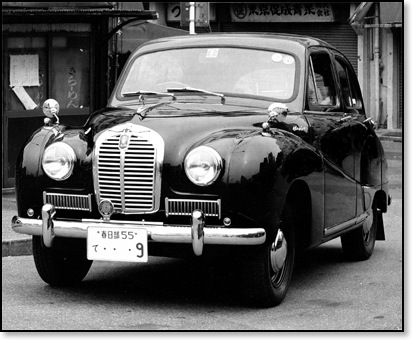
One of the last batch of A40 Somerset's
(The badge reads "The Austin Counties Car Club")
By 1952 the unions were now starting to show their power again, which resulted in restrictive practices and reduced production. In 1953 Nissan management decided to take the union on for the second time by locking out workers. They also encouraged middle management to form a new single union, one that would be more sympathetic to the companies aims. After a strike lasting nearly 100 days the workforce returned under the banner of a newly formed union.
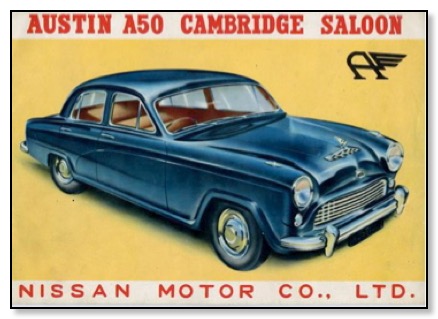
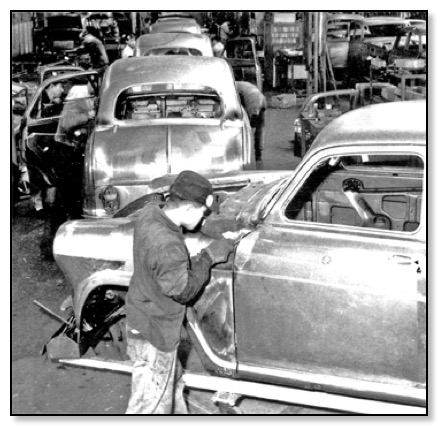
Nissan Body Assembly A50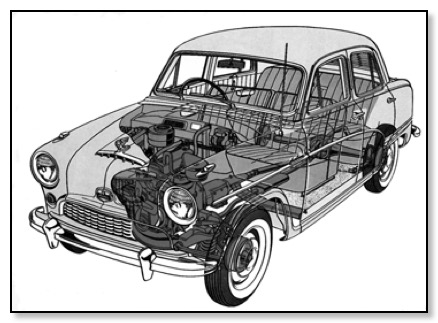
The introduction of the A50 Cambridge came in December 1954, also built from CKD kits. Although this model was available with the 1200cc and 1500cc engines in the UK, Nissan decided to only fit the 1500cc engine. By this time Nissan could phase in their own components. Gradually samples of components that they wished to source in Japan were sent to Longbridge for evaluation and testing. Austin then would approved the various parts, and deleted them from the CKD kits. So eventually after a few years, the A50 Cambridge became 100% Japanese.
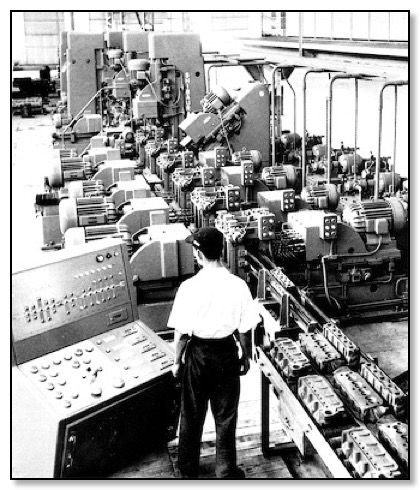
Cylinder Head Machine Line
The engine design licensed from Austin had proved to be a good unit, but they engaged a American engineer called Donald Stonestood to carry out improvements.
The next milestone for Nissan was in 1956 when they installed the transfer machines to produce 'B' series cylinder blocks and heads. Although based on the Longbridge design they were build and installed by Hitachi Seiko incorporated various improvements.
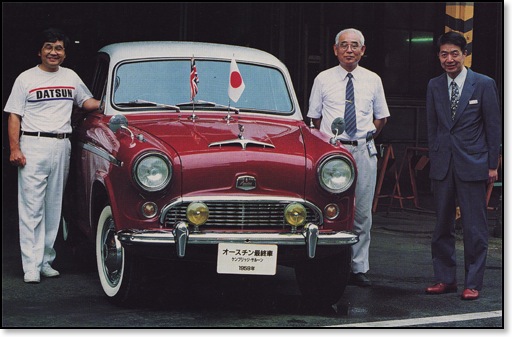
One of the Last Austin to be made by Nissan-Datsun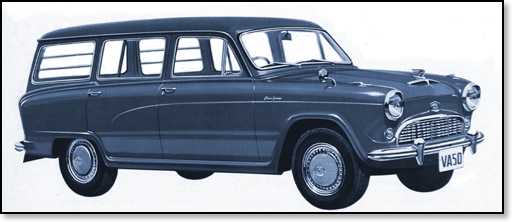
The above A50 Cambridge estate was also produced, although it wasn't that popular, they still sold 1,045. Total production of all Austin versions over the seven years came to 21,859.
In 1950 Nissan only produced 865 cars, but ten years after, when the A50 was been phased out, they produced nearly 66,000. This figure included their own models which were also powered by their own version of the ‘B’ series engine.
___________________
One of the people who went out to Japan was Eric Holbeche who joined the Austin Motor Company as an Austin Apprentice in 1937 (indentured 1937–42). During, and after, the war Eric worked as a Planning Engineer at Longbridge. In the early 1950s he joined a team based in the Kremlin which worked on the proposed merger of Austin and Nuffield to form the British Motor Corporation. He then joined a Product Development team under Frank Griffin, and was assigned the task of technical liaison with Nissan following an agreement for them to produce Austin Cars under licence.
Eric went out to Japan in 1953 for a period of four weeks. In those days the whole trip took six weeks, taking a week each way via BOAC and Pan-Am Stratocruisers. Travelling half way round the world to Nissan, and travelling back round the other half of the world, including stop-offs in Vancouver and Hawaii, provided a travel experience that few could experience in the 1950s. Whilst there he was presented with a set of Nissan, Datsun and Austin teaspoons as a gift for his help in setting up the facilities.
